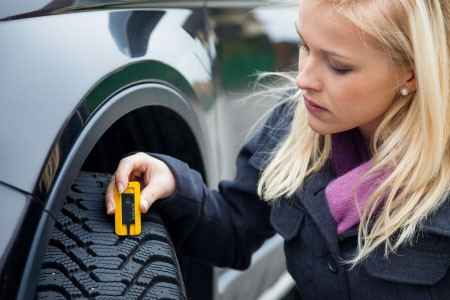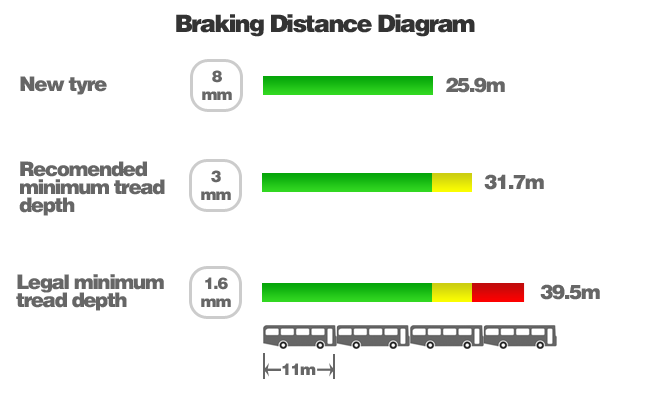Most tyre manufacturers recommend replacing the tyre when its tread depth drops below 3mm. Let's see why this is so.
Testing tyre performance on the wet has shown that tyres should be changed when the tread depth is below 3mm. Britains Motor Industry Research Association (MIRA) conducted tests in 2004. which prove that worn out tyres greatly increase the likelihood of having a car accident in the wet, because the braking distance gets substantially longer.

Although laws of European countries mandate changing tyres with 1.6 mm tread depth, the tests have shown that a tyre with a 3mm tread has 25% percent shorter braking distance on the wet than the one with 1.6 mm tread. This translates to an 8 m shorter braking distance when driving at 50 mph (80km/h). If we compare a brand new tyre with 8 mm tread with a worn out tyre having a 1.6 mm tread, the difference is a shocking 13 m in braking distance at 50 mph. That is why all manufacturers consider tyres with 3 mm tread as worn out.
The diagram below shows how tread depth translates to braking distance:

Related articles:
- Checking tyres - Tyre condition greatly affects your safety. Find out why is so important to check them.
- Make your tyres last longer - Follow these simple steps, you will significantly increase the number of miles you drive without changing your tyres.
- Tyre pressure - Tyres carry the load. It is very important to maintain correct tyre pressure.
